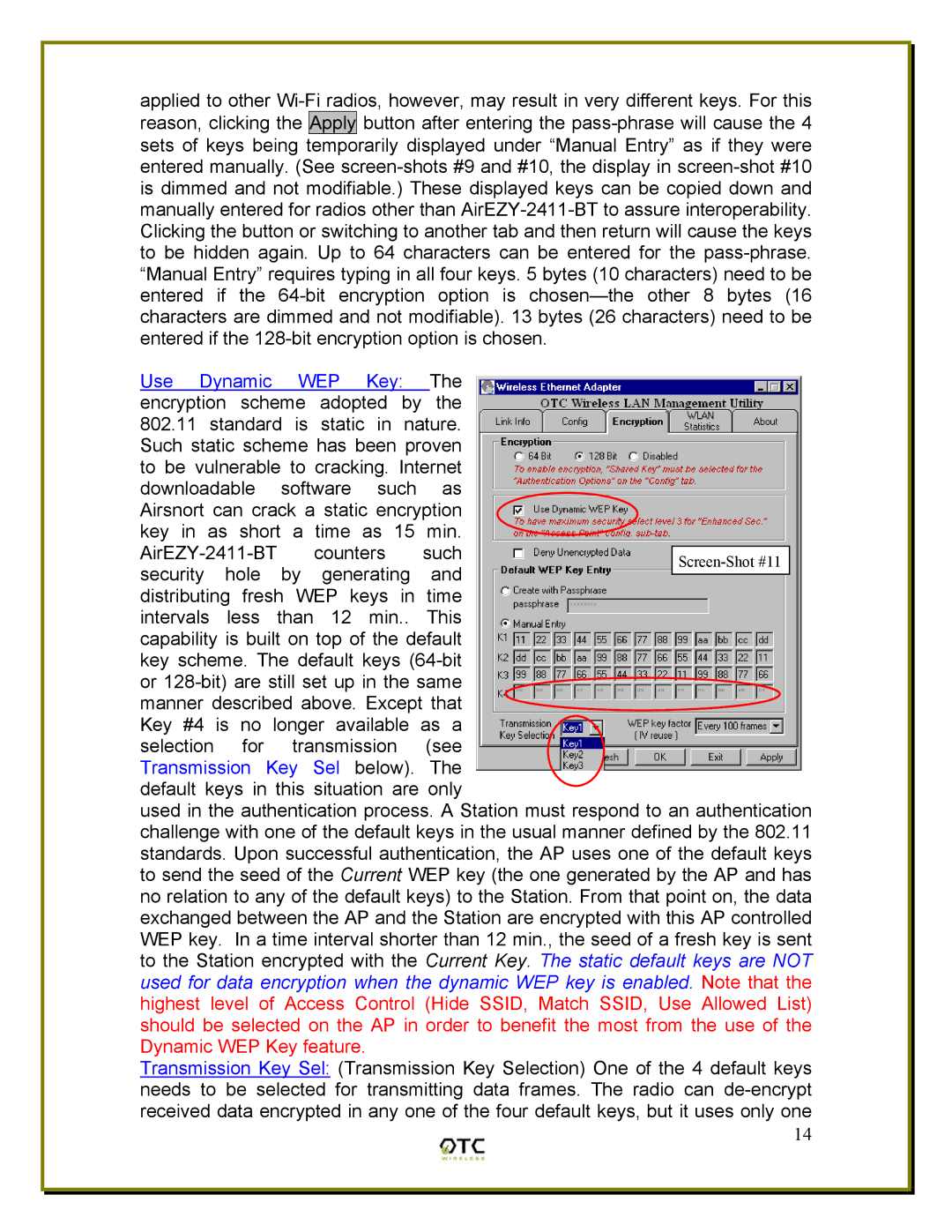Screen-Shot #11
applied to other Wi-Fi radios, however, may result in very different keys. For this reason, clicking the Apply button after entering the pass-phrase will cause the 4 sets of keys being temporarily displayed under “Manual Entry” as if they were entered manually. (See screen-shots #9 and #10, the display in screen-shot #10 is dimmed and not modifiable.) These displayed keys can be copied down and manually entered for radios other than AirEZY-2411-BT to assure interoperability. Clicking the button or switching to another tab and then return will cause the keys to be hidden again. Up to 64 characters can be entered for the pass-phrase. “Manual Entry” requires typing in all four keys. 5 bytes (10 characters) need to be entered if the 64-bit encryption option is chosen—the other 8 bytes (16 characters are dimmed and not modifiable). 13 bytes (26 characters) need to be entered if the 128-bit encryption option is chosen.
Use Dynamic WEP Key: The encryption scheme adopted by the
802.11standard is static in nature. Such static scheme has been proven to be vulnerable to cracking. Internet downloadable software such as Airsnort can crack a static encryption key in as short a time as 15 min.
AirEZY-2411-BT counters such security hole by generating and distributing fresh WEP keys in time intervals less than 12 min.. This capability is built on top of the default key scheme. The default keys (64-bit or 128-bit) are still set up in the same manner described above. Except that Key #4 is no longer available as a selection for transmission (see Transmission Key Sel below). The default keys in this situation are only
used in the authentication process. A Station must respond to an authentication challenge with one of the default keys in the usual manner defined by the 802.11 standards. Upon successful authentication, the AP uses one of the default keys to send the seed of the Current WEP key (the one generated by the AP and has no relation to any of the default keys) to the Station. From that point on, the data exchanged between the AP and the Station are encrypted with this AP controlled WEP key. In a time interval shorter than 12 min., the seed of a fresh key is sent to the Station encrypted with the Current Key. The static default keys are NOT used for data encryption when the dynamic WEP key is enabled. Note that the highest level of Access Control (Hide SSID, Match SSID, Use Allowed List) should be selected on the AP in order to benefit the most from the use of the Dynamic WEP Key feature.
Transmission Key Sel: (Transmission Key Selection) One of the 4 default keys needs to be selected for transmitting data frames. The radio can de-encrypt received data encrypted in any one of the four default keys, but it uses only one  14
14

![]() 14
14